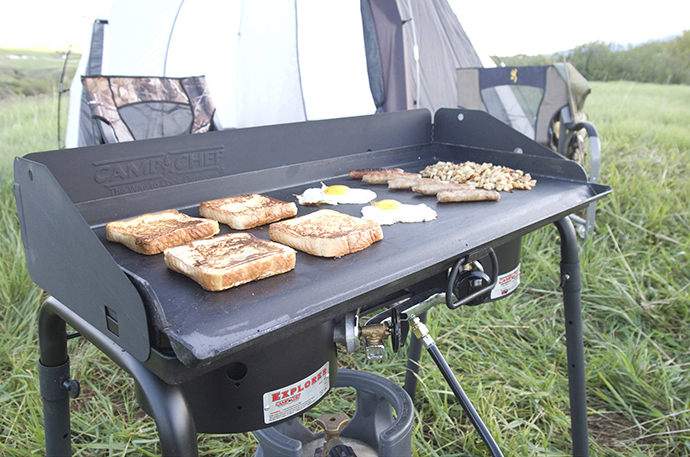
Green beans are good and so are mushrooms. Onions and bacon makes them even better. I mean, bacon makes everything better, right?! This green bean skillet is so good, it disappears very quickly. Try to load each fork bite with a little of everything. The combination of flavors is simply delightful.
This is a quick and easy side dish that compliments just about anything. Serve it alongside any protein you’ve grilled or baked in camp. It also goes well with other side dishes. Serve it alongside a casserole you baked in a Dutch oven. It’s fresh and tasty and the recipe can be sized up to feed a crowd. If you don’t have a cast iron skillet that is big enough, you can use a Dutch oven on a camp stove or over coals.
Feel free to adjust the size of your cuts depending on how chunky you want your bacon, onion, and mushrooms and, of course, salt and pepper to your liking. If you wanted to add a little heat to this, try adding some red pepper flakes or a dash of your favorite hot sauce.
The first time we made this, everyone grabbed a fork to taste it and before we knew it, the skillet was empty. Once we started, no one could stop.
Equipment
Cast-iron skillet or a Dutch oven.
Ingredients
4 slices bacon, cut into strips
1/2 medium white onion, diced or half moon slices
12 ounces green beans, cut into 1-inch pieces
4 mushrooms, sliced
1 tablespoon butter
1/2 teaspoon salt
1/4 teaspoon black pepper
Prep
In a cast-iron skillet, on medium heat, fry bacon until just starting to brown. Add onions and cook until translucent. Add green beans on top of the onions and bacon; do not stir. Let them cook about 2 minutes, then stir. Add the mushrooms. Cook, stirring frequently until the green beans are just starting to blister and mushrooms are cooked through, but still fairly firm. Add 1 tablespoon butter and stir in until melted. Add salt and pepper to taste.
Serves about 4
If you like this blog and don’t want to miss a single post, subscribe to Chuck Wagoneer by clicking on the Follow Us button in the upper right corner and follow us on Facebook and Pinterest for the latest updates and more stuff!


















Recent Comments